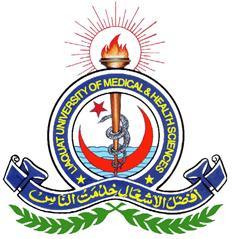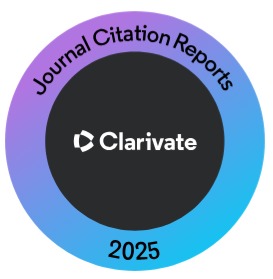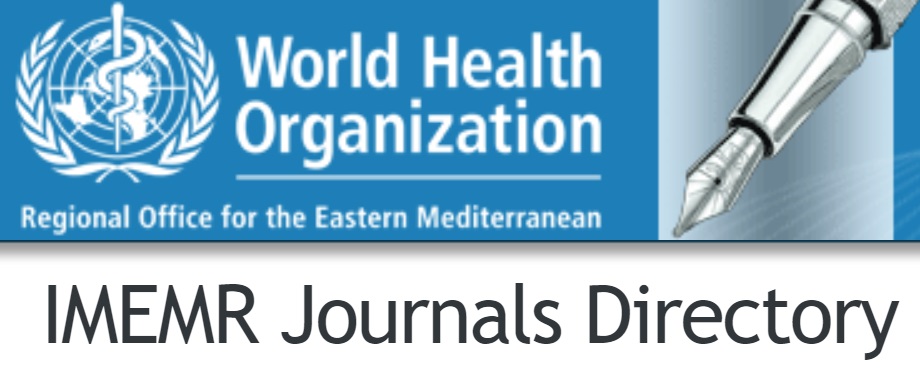Fetal Outcome among Women with Postdate Pregnancy
Keywords:
postdate pregnancy, Meconium Aspiration, Intrauterine Growth Restriction, Macrosomia, Birth Asphyxia, Fetal DistressAbstract
OBJECTIVE: The study aimed to determine the mode of delivery and fetal outcome among women with postdated pregnancies.
METHODOLOGY: This cross-sectional study was conducted from July to December 2020 in the Department of Gynecology, Hayatabad Medical Complex, Peshawar. A total of 287 women with postdated pregnancies (beyond 41 weeks) were selected through a convenient sampling technique for the study and followed to detect expected fetal outcomes. All women of age 20-45 with no signs of labor onset and cepahlic presentation of singleton pregnancy were included, while women with retained placenta detected by ultrasound, women with a medical disorder like coagulopathies (Haemophilia, Von Willebrand disease, Thrombocytopenia, DIC, Protein S deficiency, Protein C deficiency) detected by the specific investigation were excluded from the study. Data was analyzed using SPSS version 20.
RESULTS: The mean age of the sample was 30.5 years, with a standard deviation of 6.1 years. The mean parity of the sample was 2.1±1.5. The mean BMI of the sample was 26.1±3.8kg/m2. On follow-up, fetal distress in 16%, macrosomia in 18.5%, birth asphyxia in 18.1%, meconium aspiration in 8.4% and NICU admission in 9.1%. None of the neonates died in this study.
CONCLUSION: Postdated pregnancy carries a high risk of fetal distress, macrosomia and birth asphyxia. We recommend more large-scale surveys as well as trials to determine the efficacy of induction before pregnancy enters the postdate period and reduce the morbidity and mortality due to postdate pregnancies.
References
Maoz O, Wainstock T, Sheiner E, Walfisch A. Immediate perinatal outcomes of postterm deliveries. J Matern Fetal Neonatal Med. 2019;32(11):1847-52.
Norwitz ER, Snegovskikh VV, Caughey AB. Prolonged pregnancy: when should we intervene? Clin Obstet Gynecol. 2007;50(2):547-57.
Zeitlin J, Blondel B, Alexander S, Bréart G. Variation in rates of postterm birth in Europe: reality or artefact? Bjog. 2007;114(9):1097-103.
Galal M, Symonds I, Murray H, Petraglia F, Smith R. Postterm pregnancy. Facts Views Vis Obgyn. 2012;4(3):175-87.
Cotzias CS, Paterson-Brown S, Fisk NM. Prospective risk of unexplained stillbirth in singleton pregnancies at term: population based analysis. Bmj. 1999;319(7205):287-8.
Kauppinen T, Kantomaa T, Tekay A, Mäkikallio K. Placental and fetal hemodynamics in prolonged pregnancies. Prenat Diagn. 2016;36(7):622-7.
Linder N, Hiersch L, Fridman E, Klinger G, Lubin D, Kouadio F, et al. Post-term pregnancy is an independent risk factor for neonatal morbidity even in low-risk singleton pregnancies. Arch Dis Child Fetal Neonatal Ed. 2017;102(4):F286-f90.
Divon MY, Haglund B, Nisell H, Otterblad PO, Westgren M. Fetal and neonatal mortality in the postterm pregnancy: the impact of gestational age and fetal growth restriction. Am J Obstet Gynecol. 1998;178(4):726-31.
Delaney M, Roggensack A. No. 214-Guidelines for the Management of Pregnancy at 41+0 to 42+0 Weeks. J Obstet Gynaecol Can. 2017;39(8):e164-e74.
Samad A, Naz T, Akhtar N, Akhtar Z. Fetal outcome among women with pregnancy exceeding beyond 42 weeks. Journal of Medical Sciences. 2017;25(2):262-7.
Pransukhbhai PY, Londhe P. Study of maternal and fetal outcome in postdate pregnancy in tertiary care hospital. International Journal of Reproduction, Contraception, Obstetrics and Gynecology. 2020;9(9):3585-90.
Mohammed SAAM. Maternal and neonatel outcome among those with postdate pregnancy: Maternal and neonatel outcome among those with postdate pregnancy. Journal of the Faculty of Medicine Baghdad. 2019;61(2):80-4.
Gipson JD, Hirz AE, Avila JL. Perceptions and practices of illegal abortion among urban young adults in the Philippines: a qualitative study. Stud Fam Plann. 2011;42(4):261-72.
Dennis KJ. Prolonged pregnancy: the management debate. Br Med J (Clin Res Ed). 1986;293(6559):1434-5.
Malone FD. Protocol 4: Prenatal Detection of Fetal Chromosome Abnormality. Protocols for High?Risk Pregnancies2015. p. 33-47.
Syed M, Javed H, Yakoob MY, Bhutta ZA. Effect of screening and management of diabetes during pregnancy on stillbirths. BMC Public Health. 2011;11 Suppl 3(Suppl 3):S2.
Howell EA. Reducing Disparities in Severe Maternal Morbidity and Mortality. Clin Obstet Gynecol. 2018;61(2):387-99.
Middleton P, Shepherd E, Crowther CA. Induction of labour for improving birth outcomes for women at or beyond term. Cochrane Database Syst Rev. 2018;5(5):Cd004945.
Monasta L, Giangreco M, Ancona E, Barbone F, Bet E, Boschian-Bailo P, et al. Retrospective study 2005–2015 of all cases of fetal death occurred at ?23 gestational weeks, in Friuli Venezia Giulia, Italy. BMC Pregnancy and Childbirth. 2020;20(1):384.
Phelan S, Jelalian E, Coustan D, Caughey AB, Castorino K, Hagobian T, et al. Protocol for a randomized controlled trial of pre-pregnancy lifestyle intervention to reduce recurrence of gestational diabetes: Gestational Diabetes Prevention/Prevención de la Diabetes Gestacional. Trials. 2021;22(1):256.
Hersh AR, Bullard KA, Garg B, Arora M, Mischkot BF, Caughey AB. Analysis of Obstetric Outcomes by Hospital Location, Volume, and Teaching Status Associated With Non-Medically Indicated Induction of Labor at 39 Weeks. JAMA Netw Open. 2023;6(4):e239167.
Kietpeerakool C, Lumbiganon P, Laopaiboon M, Rattanakanokchai S, Vogel JP, Gülmezoglu AM. Pregnancy outcomes of women with previous caesarean sections: Secondary analysis of World Health Organization Multicountry Survey on Maternal and Newborn Health. Sci Rep. 2019;9(1):9748.
ACOG Practice Bulletin No. 205: Vaginal Birth After Cesarean Delivery. Obstet Gynecol. 2019;133(2):e110-e27.
Mamo SA, Teshome GS, Tesfaye T, Goshu AT. Perinatal asphyxia and associated factors among neonates admitted to a specialized public hospital in South Central Ethiopia: A retrospective cross-sectional study. PLOS ONE. 2022;17(1):e0262619.
Golubnitschaja O, Yeghiazaryan K, Cebioglu M, Morelli M, Herrera-Marschitz M. Birth asphyxia as the major complication in newborns: moving towards improved individual outcomes by prediction, targeted prevention and tailored medical care. Epma j. 2011;2(2):197-210.
Nadeem G, Rehman A, Bashir H. Risk Factors Associated With Birth Asphyxia in Term Newborns at a Tertiary Care Hospital of Multan, Pakistan. Cureus. 2021;13(10):e18759.
Njie AE, Nyandiko WM, Ahoya PA, Moutchia JS. A comparative analysis of APGAR score and the gold standard in the diagnosis of birth asphyxia at a tertiary health facility in Kenya. PLoS One. 2023;18(5):e0285828.
Paliulyte V, Drasutiene GS, Ramasauskaite D, Bartkeviciene D, Zakareviciene J, Kurmanavicius J. Physiological Uterine Involution in Primiparous and Multiparous Women: Ultrasound Study. Obstet Gynecol Int. 2017;2017:6739345.
Caughey AB, Stotland NE, Washington AE, Escobar GJ. Maternal and obstetric complications of pregnancy are associated with increasing gestational age at term. Am J Obstet Gynecol. 2007;196(2):155.e1-6.
Caughey AB, Bishop JT. Maternal complications of pregnancy increase beyond 40 weeks of gestation in low-risk women. Journal of Perinatology. 2006;26(9):540-5.
Caughey AB, Bishop J. Maternal complications of pregnancy increase beyond 40 weeks of gestation in low-risk women. Journal of perinatology : official journal of the California Perinatal Association. 2006;26:540-5.
Kjeldsen MH, Højlund M, Andreasen E, Khalil MR. Neonatal and maternal outcomes with elective cesarean section compared to induction of labor in twin pregnancies: A prospective cohort study. Eur J Obstet Gynecol Reprod Biol. 2023;286:85-9.
Dodd JM, Crowther CA, Grivell RM, Deussen AR. Elective repeat caesarean section versus induction of labour for women with a previous caesarean birth. Cochrane Database Syst Rev. 2017;7(7):Cd004906.
Downloads
Published
How to Cite
Issue
Section
License
Copyright (c) 2024 Journal of Liaquat University of Medical & Health Sciences

This work is licensed under a Creative Commons Attribution-NonCommercial-ShareAlike 4.0 International License.
Submission of a manuscript to the journal implies that all authors have read and agreed to the content of the undertaking form or the Terms and Conditions.
When an article is accepted for publication, the author(s) retain the copyright and are required to grant the publisher the right of first publication and other non-exclusive publishing rights to JLUMHS.
Articles published in the Journal of Liaquat University of Medical & health sciences are open access articles under a Creative Commons Attribution-Noncommercial - Share Alike 4.0 License. This license permits use, distribution and reproduction in any medium; provided the original work is properly cited and initial publication in this journal. This is in accordance with the BOAI definition of open access. In addition to that users are allowed to remix, tweak and build upon the work non-commercially as long as appropriate credit is given and the new creations are licensed under the identical terms. Or, in certain cases it can be stated that all articles and content there in are published under creative commons license unless stated otherwise.























